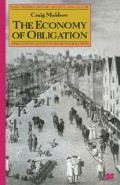Abstract
Throughout the fifteenth century the population of England remained low, or even declined because of recurring outbreaks of the plague and other diseases. Consequently, apart from some growth in cloth exports, the economy either stagnated or contracted; as a result the fifteenth century has been described as a period of deep economic depression.2 But from the 1520s, the economy once again began to expand because of a renewed population growth. A continually increasing number of mouths to feed and bodies to clothe and house created more demand for goods than in any period hitherto. As a result, prices rose and created an incentive for farmers and artisans to produce more.3 Networks of distribution and marketing also became more complex as traders took advantage of the profits which could be made by shipping goods to places where prices were high because demand was greatest. But purchasing power based on credit increased more rapidly than the technology of production and the organization of distribution, and this resulted in more than a century of constant inflation: in southern England food prices increased at least five-fold between 1530 and 1640, and the prices of industrial goods more than doubled.4
I do rejoice rather to see how God hath blessed us with His good gifts; and whilst I behold how, that, in a time wherein all things are grown to most excessive prices and what commodity soever is to be had is daily plucked from the commonalty by such as look into every trade, we do yet find the means to obtain and achieve such furniture as heretofore hath been unpossible.
(William Harrison, Description of England, 1587)1
Access this chapter
Tax calculation will be finalised at checkout
Purchases are for personal use only
Preview
Unable to display preview. Download preview PDF.
Notes
C.G.A. Clay, Economic Expansion and Social Change: England 1500–1700 (Cambridge, 1984), I, 102–41, II, pp. 1–42.
Keith Wrightson and David Levine, Poverty and Piety in an English Village, Terling 1525–1700 (New York, 1979), pp. 19–42; Alan Everitt, ‘Farm labourers’, in AHEW IV (Cambridge, 1967), pp. 396–465, esp. pp. 412–42
Britnell, Commercialization, pp. 53–5, 68–71, 128–30, 145–6, 198–203, 217–23; Michael Zell, Industry in the Countryside, Wealden Society in the Sixteenth Century (Cambridge, 1994), pp. 10–51; Joyce Youings, The Dissolution of the Monasteries (London, 1971), pp. 117–31, 229, 244–5; Paul Glennie, ‘In search of agrarian capitalism: manorial land markets and the aquisition of land in the Lea Valley c. 1450-c.1560’, Continuity and Change 3(1) (1988), pp. 11–40.
Ibid., pp. 230–6, 249–54; R.H. Tawney and Eileen Power (eds.), Tudor Economic Documents (London, 1924), I, pp. 212–16; II, pp. 45–7.
Ralph Davis, The Trade and Shipping of Hull 1500–1700 (Yorkshire, 1964), pp. 8–9; Robert Tittler, ‘The vitality of an Elizabethan port: the economy of Poole, c.1550–1600’, Southern History, 7 (1985), pp. 95–118
John Hatcher, The History of the British Coal Industry before 1700: Towards the Age of Coal, I (Oxford, 1992), pp. 5–8.
W.G. Hoskins, ‘The rebuilding of rural England 1570–1640’, Past and Present, 4 (1953), pp. 44–57.
R. Machin, ‘The great rebuilding: a reassessment’, Past and Present, 77 (1977), pp. 35–9.
R.K. Field, ‘Worcestershire peasant buildings, household goods and farming equipment in the later middle ages’, Medieval Achaeology, 9 (1965), pp. 105–45.
Author information
Authors and Affiliations
Copyright information
© 1998 Craig Muldrew
About this chapter
Cite this chapter
Muldrew, C. (1998). The Sixteenth-Century Growth of the Market. In: The Economy of Obligation. Early Modern History: Society and Culture. Palgrave Macmillan, London. https://doi.org/10.1007/978-1-349-26879-5_2
Download citation
DOI: https://doi.org/10.1007/978-1-349-26879-5_2
Publisher Name: Palgrave Macmillan, London
Print ISBN: 978-1-349-26881-8
Online ISBN: 978-1-349-26879-5
eBook Packages: Palgrave History CollectionHistory (R0)

